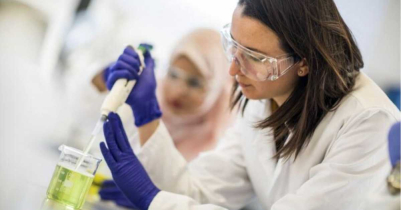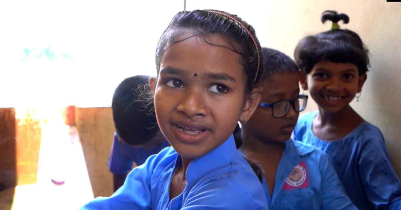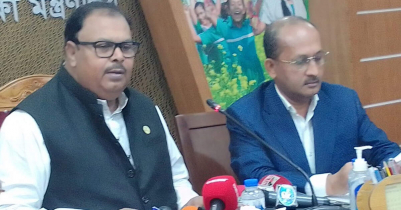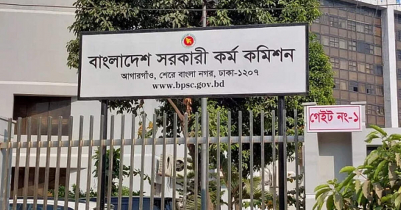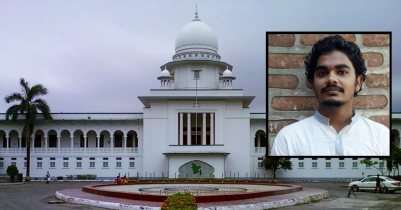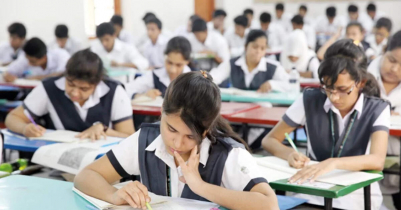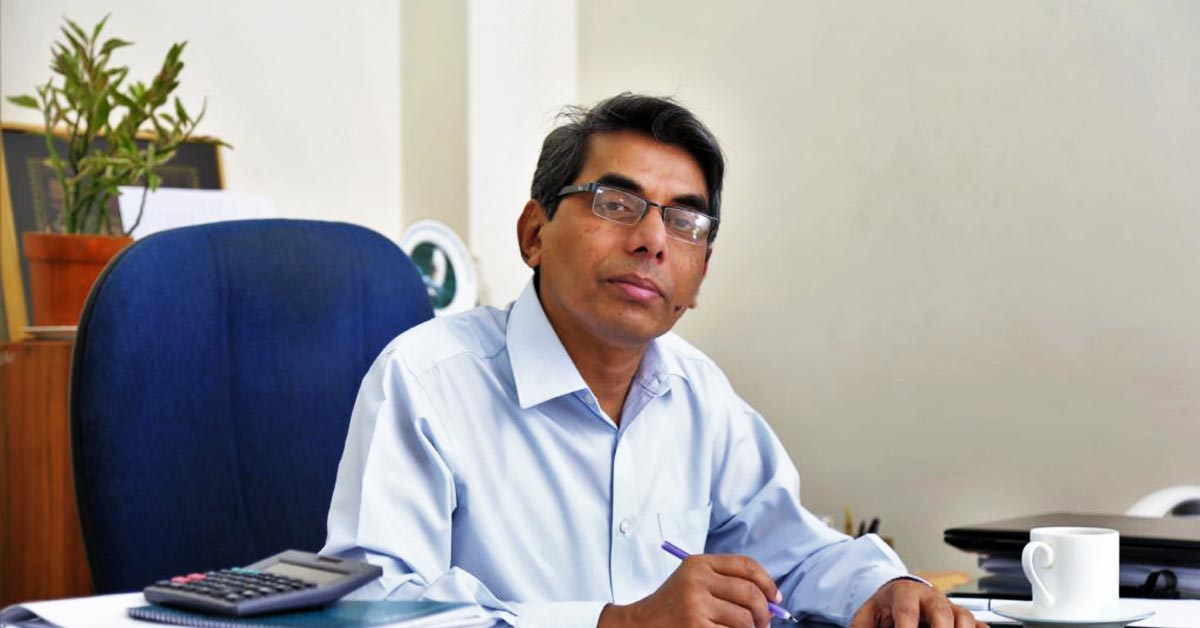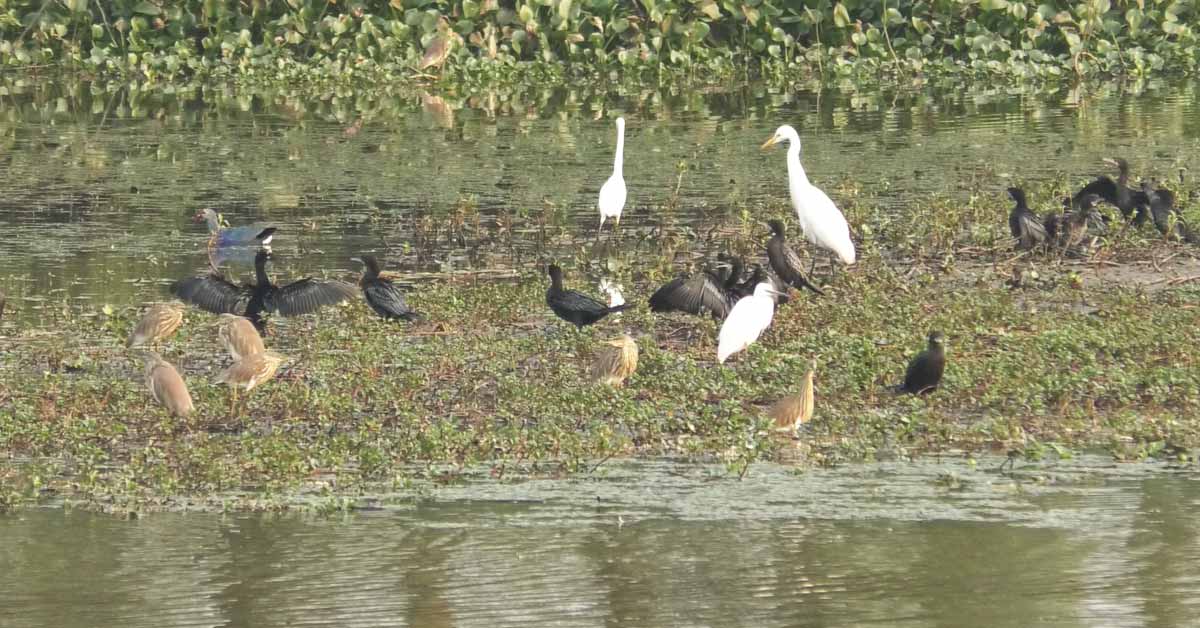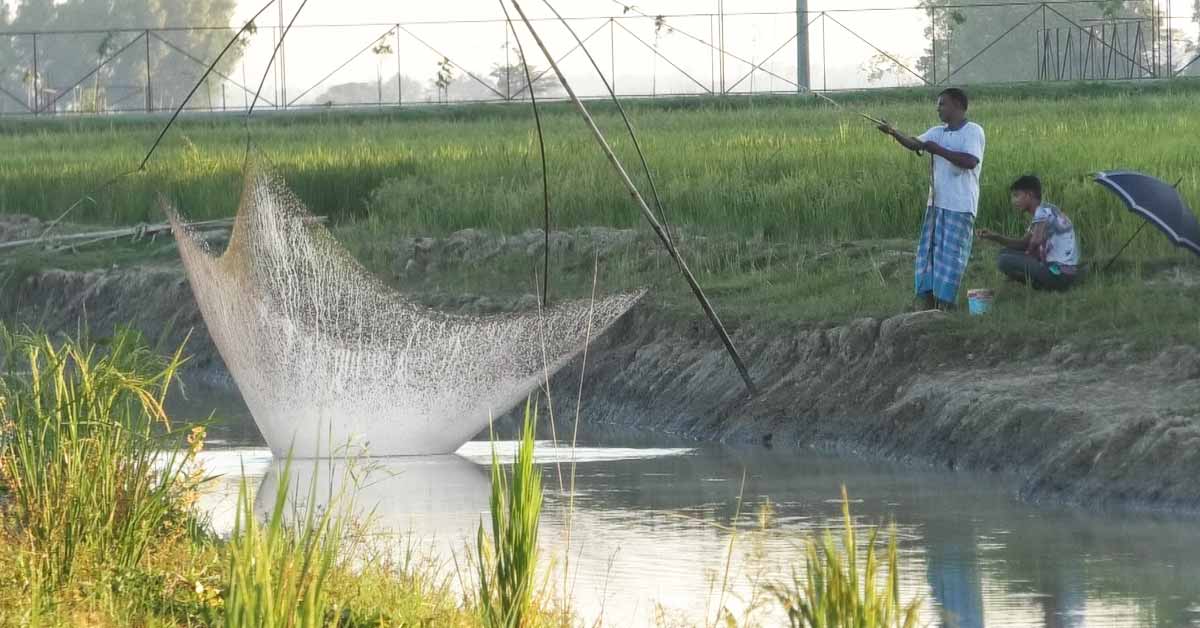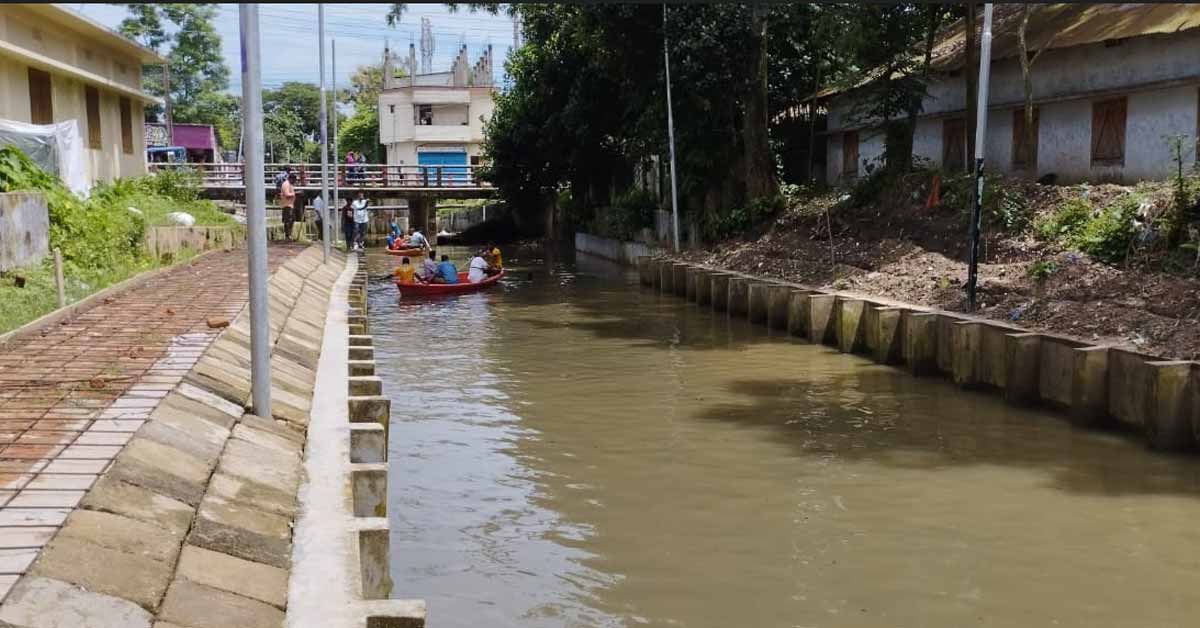Sufi Hridoy
Dhaka University | Eye News
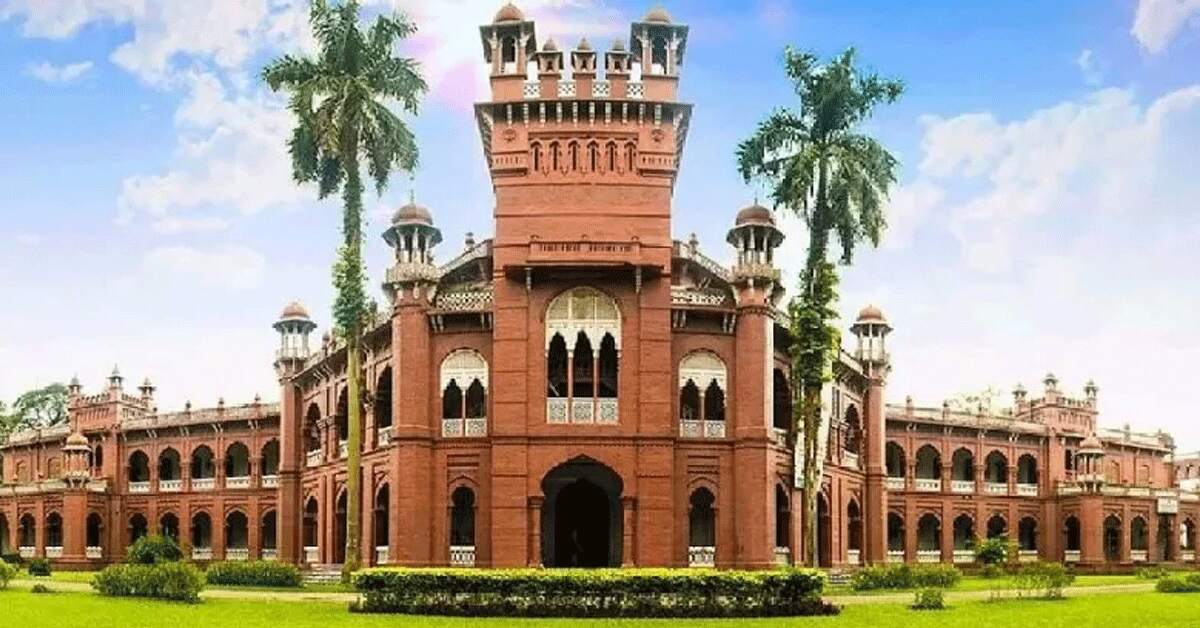
Dhaka University is the first university in East Bengal. Education in this university started on 1st July 1921. Dhaka University's important contribution is to create a Muslim middle class society in East Bengal. Later this Muslim middle class society led the change in the social system of East Bengal. Dhaka University is the result of the renaissance that started in the Muslim society of East Bengal from the period of Partition of Bengal and Bengal.
Context of establishment
The state of the Muslim society of East Bengal at that time: Ahmad Chhafa has discussed the past and present of this Bengali community very nicely in the book "Mind of Bengali Muslims". The gist of his discussion is that the Aryans i.e. the Brahmins brought the varnasrama system to Hindustan. After the arrival of the Aryans in Bengal, the natives here became a low caste. Only man is a worshiper of power. So the tribals of this region started adopting the religion of Brahmin kings. Once they claimed themselves as Hindus. Bankimchandra also said this.
But even after becoming a Hindu, they were oppressed and oppressed at every level in the society. In opposition to this caste system, the people of Bengal adopted Buddhism with the title of atheist. As a result of the advent of Shankaracharya, Hindu caste system got a new life. Buddhists left the country fearing for their lives. Muslim rulers came and poured some water on the fire. But the coal is still burning. Those Brahmin Hindus also got jobs in the courts of Muslim rulers. And the lower caste Hindus converted to the ruler's religion, which means they became Muslims. They only consoled themselves by saying that they too were Muslims. The rulers of the country are also Muslims. But their fate did not change. In short, the people of Bengal have been oppressed, oppressed and exploited since ancient times. Sometimes Aryan exploitation, sometimes British exploitation.
When Bengal came under the control of the British, the Hindus automatically submitted to the British. I have mentioned here a line from Bankimchandra's novel "Anandmath" which can be read to understand how much the Hindus were loyal to the British.
"The children did not understand that the English came to rescue India. How will they understand? Even the Englishmen of Captain Thomas's time did not know it. It was only in the mind of God."
The British established Fort William College here after the occupation of Bengal. This is the first college of Bengal. Only English was taught here. They learned native language and history.
In 1817, wealthy Hindus established a Hindu college here. Only Hindus were admitted there. Not only Hindus will do. Must be of high caste among Hindus. Michael Madhusudan Dutt wanted admission here. But due to his conversion to Christianity, he could no longer be admitted here. Later, under the pressure of the British, the admission of Christian students started. It was renamed Presidency College in 1855 and Muslim students began to be admitted from then. At that time, only four-five Muslim students passed INTER every year. Because there was a lot of ambivalence among Muslims about receiving English education. Muslims felt that the British had taken away their freedom. So it is not right to take British education. The establishment of Deoband Madrasas and the wearing of Lungi-Punjabi by madrasa students was also an expression of anti-British sentiment. Because those who received British education also received British culture. Like wearing shirt-pants, coat-tie.
If we review the biography of Khan Bahadur Ahsanullah Sahib, many things come before us. He made many efforts to establish Dhaka University. He built numerous schools, colleges, madrasas in East Bengal. Among the Parbi na activities, some of the activities are mentioned here.
• At that time, the university had to write the candidate's name in the examination book. Many felt that the prevailing communalism would have resulted in bias between Hindu and Muslim candidates. Khan Bahadur Ahsanullah first introduced the practice of writing serial numbers instead of names in Honors and MA examination books. Later, the practice of writing the candidate's name was abolished in the case of A.A and B.A examinations.
• At that time students passing out from High School and Intermediate Madrasas did not have the opportunity to get admission in colleges. Khan Bahadur Ahsanullah improved the quality of education in these madrasas. As a result, students who passed out from the madrasas have the opportunity to get admission in colleges and universities.
• During that period, he created the post of Maulbi in all schools and colleges and abolished the disparity between the salaries of scholars and Maulbi.
A review of the above facts shows how backward the Muslim society was at that time. How deprived it was.
Partition of Bengal: Then on October 16, 1905, Partition of Bengal took place. Then the new provinces of 'East Bengal' and 'Assam' were created with Dhaka as the capital. As a result of the partition of Bengal, education improved most in East Bengal. There are many jobs. A ray of hope began to dawn in the minds of the common Muslims of East Bengal. It did not only benefit Muslims. It also brings prosperity to the neglected Hindus of East Bengal. But this happiness is blinded by the grandfathers of Calcutta. They could not accept the partition of Bengal. A lot of nationalist literature was written then. Rabindranath Tagore wrote "Amar Sonar Bangla". At that time the Swadeshi movement became very intense. Ravi Tagore's novel "Ghare Baire" is based on the activities of hypocritical natives. It shows how the Swadeshi agitators oppress the innocent poor Muslims. Muslim houses were burnt.
Then on November 1, 1911, the partition of Bengal was canceled on December 12 through a declaration at the Delhi Durbar. However, due to the partition of Bengal, there was a strong demand for education in East Bengal, which necessitated a university in Dhaka. But as a result of the cancellation of the partition of Bengal, the possibility of establishing a university ended. On January 21, 1912, the Viceroy of India, Lord Hardinge, visited Dhaka and later announced that he would recommend to the government the establishment of a university in Dhaka.
Nathan Committee was formed under the leadership of Barrister Robert Nathan to establish Dhaka University in May 1912. Based on the report of this committee, the British government decided the outline for the proposed Dhaka University. The Indian Secretary approved the report of the Nathan Committee in 1913. But at that time the First World War started. As a result, the establishment of Dhaka University stopped.
In March 1917, the Nawab Syed Nawab Ali Chowdhury of Dhanbari, Tangail, in the Imperial Legislative Council called for the immediate submission of the Dhaka University Bill to the government. In 1917 Lord Chelmsford, Chancellor of Calcutta University, constituted a committee to investigate the problems of Calcutta University. That commission is given the responsibility of giving advice about Dhaka University. The head of this commission is Michael Sadler. The Calcutta University Commission (Sadler Commission) recommended the establishment of a university in Dhaka. But this commission did not support the proposal of the Nathan Committee to make Dhaka University a government or state university. But Dhaka College law department co-principal Dr. Nareshchandra Sengupta called full autonomy as the main strength of the university. TC Williams, professor of political science and economics of that college, demanded full independence of Dhaka University in economic matters. The Calcutta University Commission recommended that various residential halls be considered as units of Dhaka University instead of Dhaka City Colleges. Besides, it is said that the five mile radius area of the University Council House will be considered under the jurisdiction of Dhaka University. The Calcutta University Commission made thirteen recommendations for the establishment of Dacca University, and with some modifications these were adopted by the Indian Legislature in 1920. The then Governor General of India gave his consent on 23 March 1920. One of the members of the Sadler Commission was the Academic Register of the University of London P. J. Hartog. He was appointed as the Vice-Chancellor of Dhaka University on 1 December 1920. Dhaka University officially started its activities on July 1, 1921.
Was Rabindranath Tagore against the establishment of Dhaka University?
The Baburs of Calcutta never wanted a university to be established in Dhaka. Big businessmen, political leaders, landlords, educated socialists were strongly opposed to the establishment of a university in Dhaka. Among them are Saratchandra Chakraborty, Anandachandra Roy, Gurudas Bandyopadhyay, Rasbihari Ghosh. Rabindranath had a good relationship with them. This is why many doubt that Rabindranath was against the establishment of Dhaka University. Besides, the process of making Santiniketan, founded by Rabindranath in 1901, into Visva-Bharati University began in 1918. This is why many consider Rabindranath to be against the establishment of Dhaka University.
Dhaka University Campus
Dhaka University was developed as a residential university in a well-planned manner. Pleasant environment full of green trees. Dhaka Hall (now Shahidullah Hall), Lytton Hall, Curzon Hall, science buildings, large pond on the east side of Dhaka Hall, Fazlul Haque Muslim Hall on the other side are located on the east side of the university campus. The main entrance to the university grounds was from the Dhaka Hall (now Shahidullah Hall) side, there is a gymnasium on the right and a pond on the left as you enter the grounds. The university grounds were triangular in shape and had two football grounds. The north south east side of the field is lined with trees. The road to the south of the university grounds is lined with eucalyptus trees. The road which extends up to the Muslim Hall and in front of the Muslim Hall is adorned with Shirish or Raintree. Parallel to the old railway line is the former East Bengal and Assam Government Secretariat building, in front of the wide avenue adorned with eucalyptus and the university grounds. The second floor of the secretariat building was first occupied by the Muslim Hall and the first floor by departments other than science such as the arts faculty and classrooms. During World War II, all but the eastern part of this huge building was converted into a military hospital and a pre-partition medical college.
There were two or three large red brick two-storied bungalows along the road running north of the university playground. Where the university professor lived. Behind these bungalows facing the Ramna Race Course is the Burdwan House and then the Dhaka University dormitory and associated faculty residence. The residence of the Prime Ministers of East Bengal, first Khwaja Nazimuddin and later Nurul Amin after partition. After the victory of the United Front in the 1954 general elections, Burdwan House was converted into the Bangla Academy in 1957 according to one of the twenty-one points. Inside the university grounds there was then a pond (in the north-east corner) and a wooded old graveyard, but it is gone now.
residential environment
Dhaka University was established on 1 July 1921 with Dhaka Hall (later Shahidullah Hall), Jagannath Hall and Muslim Hall (later Salimullah Muslim Hall). The halls were designed not only as dormitories but also as learning and practice centers to develop the academic, social and cultural life of the students. The plan was that every teacher in the university would be associated with some hall, acting as an advisor to the students and taking practical classes. Each hall was divided into four houses for four hundred students with one resident teacher or house tutor to supervise each seventy five students. Jagannath Hall for Hindu students, Salimullah Muslim Hall for Muslim students and Dhaka Hall for students of all religions were established.
Dhaka University is a witness of history
20th decade: In February 1926, Rabindranath Tagore came to Dhaka at the invitation of Dhaka University and delivered a lecture on The Meaning of Art on February 10 and The Big and the Complex on February 13 at Curzon Hall. Rabindranath was felicitated from the first three halls of Dhaka University. But Kavi Guru could only attend the reception at the Muslim Hall due to illness. The Muslim Literary Society was formed on 19 January 1925. The founder of this institution was Professor Abul Hossain, along with him were teachers and students like Abdul Qadir, Anwarul Qadir, Shamsul Huda, Kazi Abdul Odud, Kazi, Kazi Motahar Hossain, Abul Fazal. The main mantra of this organization was "Liberation of intellect". The spokesperson of the Muslim Sahitya Samaj was the anniversary called 'Shikha'. The rebel poet Kazi Nazrul inaugurated the first annual conference of the Islam Sahitya Samaj in 1927. Saratchandra Chatterjee was the president of the tenth and last session of the Muslim Sahitya Samaj in 1936. .
30 Decades: Mrs. Karunakana Gupta was appointed as the first female teacher of Dhaka University in the history department in 1935-36 i.e. 14 years after its establishment. In 1937, the first student council was formed and Mrs. Charupama Basu was elected as its president, Sarma Dutta Majumder and Anubha Sen as general secretary and literary secretary respectively. This student council publishes a magazine called “Suparna”. In this decade, the number of female students in Dhaka University continues to increase every year. In the 1936 convocation Sir Rabindranath Tagore, Sir Prafull Chandra Roy, Sir Jadunath Sarkar, Sir Mohammad Iqbal, Sir Abdur Rahim, Sir Jagdish Chandra Bose, and Saratchandra Chattopadhyay were awarded honorary doctorates. In 1938, the 'Sanskrit and Bengali Department' was broken up and two separate 'Sanskrit' and 'Bangla' departments were opened.
40s and Partition: After the Lahore Resolution in March 1940, the Pakistan movement arose among the students of the Muslim community. For the first time the Muslim students of Dhaka University are actively involved with the country's largest political movement. During World War II, most of the campus buildings were occupied by the army. During the war and post-war period, the number of students decreased due to famine.
Language movement
Before the establishment of Pakistan, Dr. Ziauddin of Aligarh University proposed to make Urdu the national language of Pakistan. Shahidullah offered Bengali language in return. At that time, under the leadership of Professor Abul Kasem of Dhaka University, 'Tamuddun Majlis' started a campaign to demand the national language of Pakistan. On March 11, 1948, the student society of Dhaka University held a protest meeting, general strike and demonstration against the absence of Bengali language in the Parliament of Pakistan. On that day the police stopped the students and arrested many students. Among the imprisoned leaders were Shamsul Haque, Sheikh Mujibur Rahman, Ali Ahad, Shaukat Ali, Kazi Golam Mahbub and others. Yet the student movement continued. Finally on March 15 Prime Minister Khawaja Nazimuddin signed an agreement with the students. Four days later, Muhammad Ali Jinnah, the founder of Pakistan, came to Dhaka and addressed a large public meeting at the Dhaka Race Course Maidan on 21 March and made a clear announcement to make Urdu the state language. Jinnah addressed a convocation ceremony at Dhaka University on March 24. Here he said that different provinces of the state will have one language as the language of communication and that language will be Urdu and no other language. A delegation of the Rashtrabhasha Karma Parishad then met Jinnah and submitted a memorandum demanding that Bengali be made one of the official languages of Pakistan. The delegation included Shamsul Haque, Kamruddin Ahmed, Abul Kashem, Tajuddin Ahmed, Mohammad Toaha, Aziz Ahmed, Oli Ahad, Naeemuddin Ahmed, Shamsul Alam and Nazrul Islam. East Pakistan's first anti-government organization 'East Pakistan Muslim Chhatra League' was formed in a meeting held at Dhaka University's Fazlul Haque Hall in 1948. On November 27, 1948, Pakistan's Prime Minister Liaquat Ali Khan addressed a student meeting at the Dhaka University playground. In that meeting, the demand of Bengali language was again raised by Dhaka University Central Student Union. However, Liaquat Ali Khan refrained from making any comments.
Bayannar Language Movement
On January 26, 1952, Pakistan's Prime Minister Khawaja Nazimuddin announced that Urdu would be the national language of Pakistan in his presidential address at the session of the Nikhil Pakistan Muslim League in Dhaka. Then the student community in Dhaka became excited. As a protest, the students went on strike in Dhaka on January 30 and in a meeting held under the chairmanship of Ataur Rahman Khan, a 'Sarbaldaliya Karparishad' was formed with representatives of Awami Muslim League, Jubo League, Chhatra League, University Struggle Parishad, Khilafat Rabbani Party. A student strike was again observed on 4th February and it was decided that 21st February would be celebrated as National Language Day. On the evening of February 20, the Nurul Amin government issued Section 114 in Dhaka. It was decided not to break Article 114 under the chairmanship of Abul Hashim at the Awami League office in Nawabpur. But, the University Struggle Council was determined to break Article 114. Abdul Matin, Ali Ahad and Golam Mawla voted in favor of scrapping Article 114 in the meeting of Sangram Parishad. The students divided into numerous groups of 10 and decided to violate Section 114 with discipline. On February 21, when the students started violating Section 114, a skirmish started with the police. On the other hand, the budget session was supposed to start in the legislative council at around 3 pm. Students began moving towards the Parishad building demanding language, but were intercepted by the police and at one point opened fire. Rafiquddin and Jabbar were killed in the first round of firing. In the second round of firing, Dhaka University student Abul Barkat was injured and killed in the night. Ghaibana Janaza was held on February 22 in Dhaka Medical College premises and students took out a huge mourning procession. The police intercepted the students and opened fire on the road between the High Court and Curzon Hall. At that time Shafiur Rahman and rickshaw driver Awal were killed. On February 23, students constructed a Shaheed Minar. On the morning of February 24, Shaheed Shafiur Rahman's father informally and on February 26, Abul Kalam Shamsuddin officially inaugurated the Shaheed Minar. Meanwhile, the police arrested Abul Hashim, Abdul Hamid Khan Bhasani, Professor Munir Chowdhury, Professor Ajitkumar Guha, Pulin Dey, Professor Prithvish Chakraborty, Oli Ahad and others under the Security Act. The Nurul Amin government termed the language activists as 'Indian Char', 'Hindus', 'Communist' etc.
Agartala Conspiracy Case
In 1967, the Ayub government filed the 'Agartala Conspiracy Case' with Lieutenant Colonel Moazzem Hussain as an accused against some military and civilian figures of East Pakistan. A few days later, Sheikh Mujib was made the prime accused. In response to this case, the entire East Bengal erupted and this movement was led by the 'Sarbadliya Sangram Parishad' formed on the basis of 11 points of Dhaka University.
Liberation War and Dhaka University
Dhaka University is an important document in the freedom struggle in 1971. In 1971, the Pakistan Armed Forces attacked Bengali soldiers, airmen and students in military ranks. The name of this operation was “Operation Search Light”. The time was fixed on March 26 at 1 pm. The army from the cantonment encountered its first resistance at Farmgate. A huge tree lying on the road blocked the movement of the force, the roadside area was blocked with old cars and steam rollers. Students of Dhaka University's Muslim Hall blocked the army by leaving a big tree trunk in front of the hall. They occupied the university buildings by 4 am. A special mobile force consisting of various battalions of 18 Punjab, 22 Baloch and 32 Punjab Regiments under the command of Lt Col Taj equipped with automatic rifles, rocket launchers, mortars, anti-tank bi-barrel rifles, heavy and light machine guns from 25th March to 27th March 1971. Dhaka University campus was surrounded by attacks, wholesale killings, looting, arson and destruction. Professor Dr. who survived the Pakistani attack by chance that night. Mafizullah Kabir wrote in his annual report for the year 1971-72, that night about 300 people, including students, were martyred in the university area. There were also 10 teachers and 26 other employees of the university. Among the dead teachers, Dr. Fazlur Rahman (Soil Science Department), Professor A. And. Khan Khadim (Department of Mathematics), Professor Sharafat Ali, Dr. Govindachandra Dev (Former Provost Jagannath Hall), Professor Moniruzzaman, Dr. Jyotirmoy Guhathakurata (Provost Jagannath Hall), Anudvaipayana Bhattacharya, Prof. Muhammad Muqtadir (Geology) etc.
The most infernal incident took place at Jagannath Hall, where 34 students were killed that night in that hall alone. Ramana Kalibari was also infected on March 26. 5/6 students of Jagannath Hall were killed on that spot. Madhusudan Dey (Madhuda), the famous madhu canteen was killed by the invading forces and when the Pakistani soldiers started blowing up the Madhur canteen with dynamite, Aftab Ahmed Siddiqui, a teacher of the Urdu Department, stopped them on hearing the news and said that the Muslim League was established in this building in 1906. On November 10, armed soldiers entered Rokeya Hall and tortured thirty female students. They also besieged the Provost's bungalow. In March 1971, the then Vice-Chancellor of Dhaka University, Justice Abu Saeed Chowdhury, went to Geneva to attend a session of the United Nations Human Rights Commission. Disturbed by the news of the death of two Dhaka University students in a newspaper in Geneva, he wrote on March 25 in a letter sent to the East Pakistan Provincial Education Secretary through the Pakistan Embassy, "There is no reasonable reason for me to be the Vice Chancellor after my unarmed students were fired upon." So I resigned."
As a result, Dhaka University was without a vice-chancellor on that dark night of March. Later, the Mujibnagar government appointed Justice Sayeed as "Special Representative of the Expatriate Government". The then Vice-Chancellor of Pakistan Army Rajshahi University. They brought Syed Sajjad Hossain to Dhaka in their convoy and installed him as the Vice-Chancellor of Dhaka University on 19 July. He was assisted by Dr. Hassan Zaman, Dr. Meher Ali All three were arrested after independence and left the country after their release. Many students of Dhaka University directly participated in the liberation war. Many of them later got commission in Bangladesh Army. Many teachers of Dhaka University went to Mujibnagar during the liberation war and played an important role in the expatriate government.
Post-Independence University of Dhaka (Seventies)
Bangabandhu Sheikh Mujibur Rahman came to power after the independence of Bangladesh. He formed Bangladesh Krishak Sramik League or Bakshal. Respecting the Digital Security Act of Bangladesh, nothing will be written about Bakshal.
In 1975 Bangabandhu was overthrown by the brutal army. Ziaur Rahman then became the president of Bangladesh.
The 80s
On May 30, 1981, President Ziaur Rahman was killed in a military coup at Chittagong Circuit House. Hussain Muhammad Ershad assumed power on March 24, 1982. Then the students held a protest program in Dhaka University. The military government suppressed the student movement and arrested many students. On September 17, 1982, on 'Education Day', the military government prevented Dhaka University students from laying flowers at the Shaheed Minar and arrested one student. On November 8, on the occasion of the celebration of 'Sepahi Biplab Diwas', the police attacked the procession of the Jasad Chhatra League in Kala Bhavan premises, resulting in a student-police clash. That year on December 8 morning-evening strike was observed in the country. Student leader Rauful Basunia was shot dead by unidentified assailants near Sir AF Rahman Hall. On December 1 of that year, Ershad banned politics in all educational institutions of the country. Dhaka University was basically unstable for the entire eighties.
90's
During this time the students of Dhaka University became vocal against the dictator. On October 10, many students lost their lives in police firing while joining the march to demand the liberation of democracy. A student named Jehad of Dhaka University was martyred in police firing. A few students managed to retrieve Jehad's body before the police arrived and removed it. The body was brought and kept in front of the invincible Bengal. Hundreds of students gathered to see the body. And at that moment all the students present declared solidarity for the freedom of democracy. Chhatra Dal and Chhatra League came together to form the All-Party Student Alliance. All-Party Student Alliance was headed by 11 students. In a meeting organized at Shaheed Minar on November 26, these 11 people and thousands of students of Dhaka University united and vowed to establish a caretaker government. Later elections were held under a caretaker government.
Present Dhaka University
Currently, Dhaka University is not even in the list of the best 1000 universities in the world. But singara, samcha and tea are available here for 10 taka. Which is nowhere else to be found and which progressives are proud of.
Read More
- SSC Exam Result 2023 with marksheet
- Opportunity to study for free at Oxford
- GST Admission : C Unit result published
- Prof Abul Anam Md. Riaz appointed new principal of MC College
- Admission to eight private universities ban
- Lifelong Learning of our Children
- Professor Amina Parveen new SUST treasurer
- HSC Exam Routine 2023
- SUST Eid vacation starts from today
- How to get SSC Result 2023



